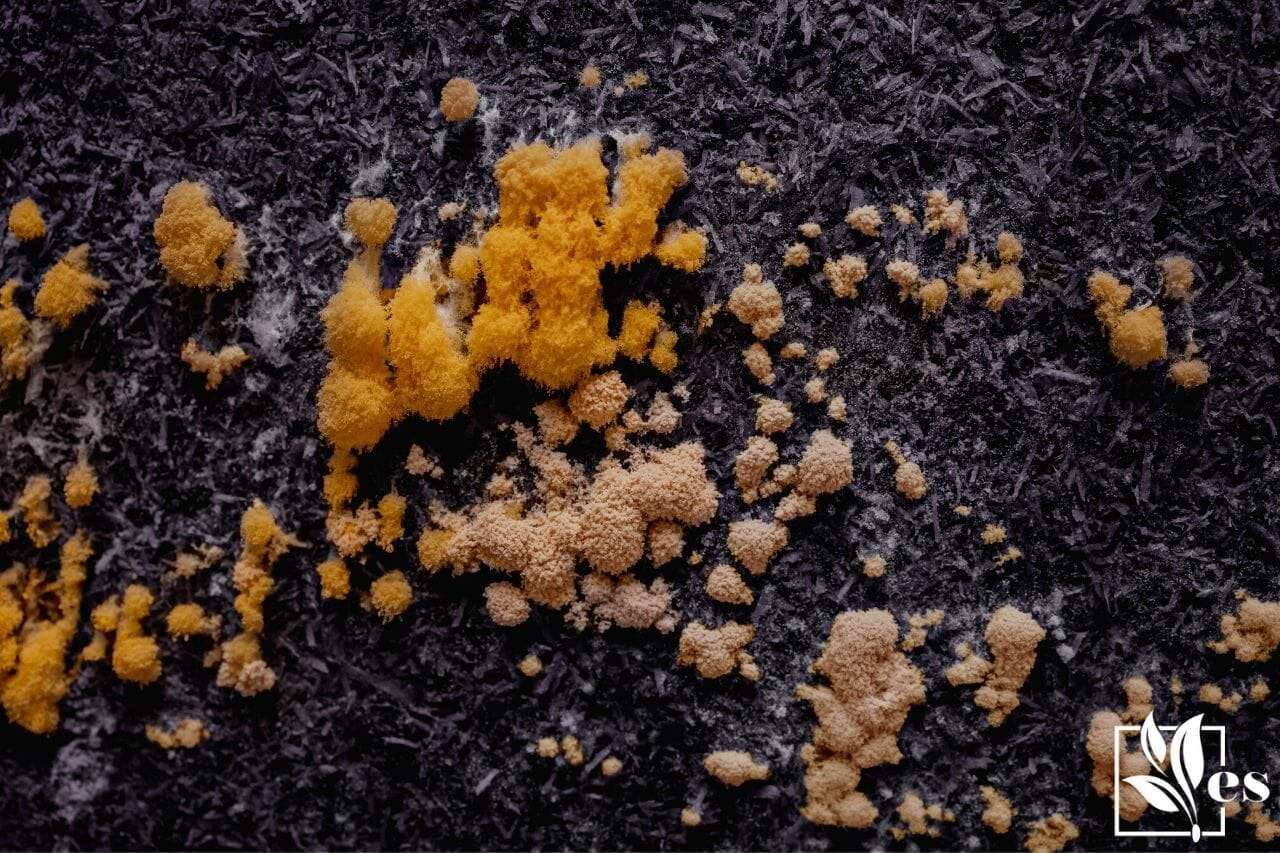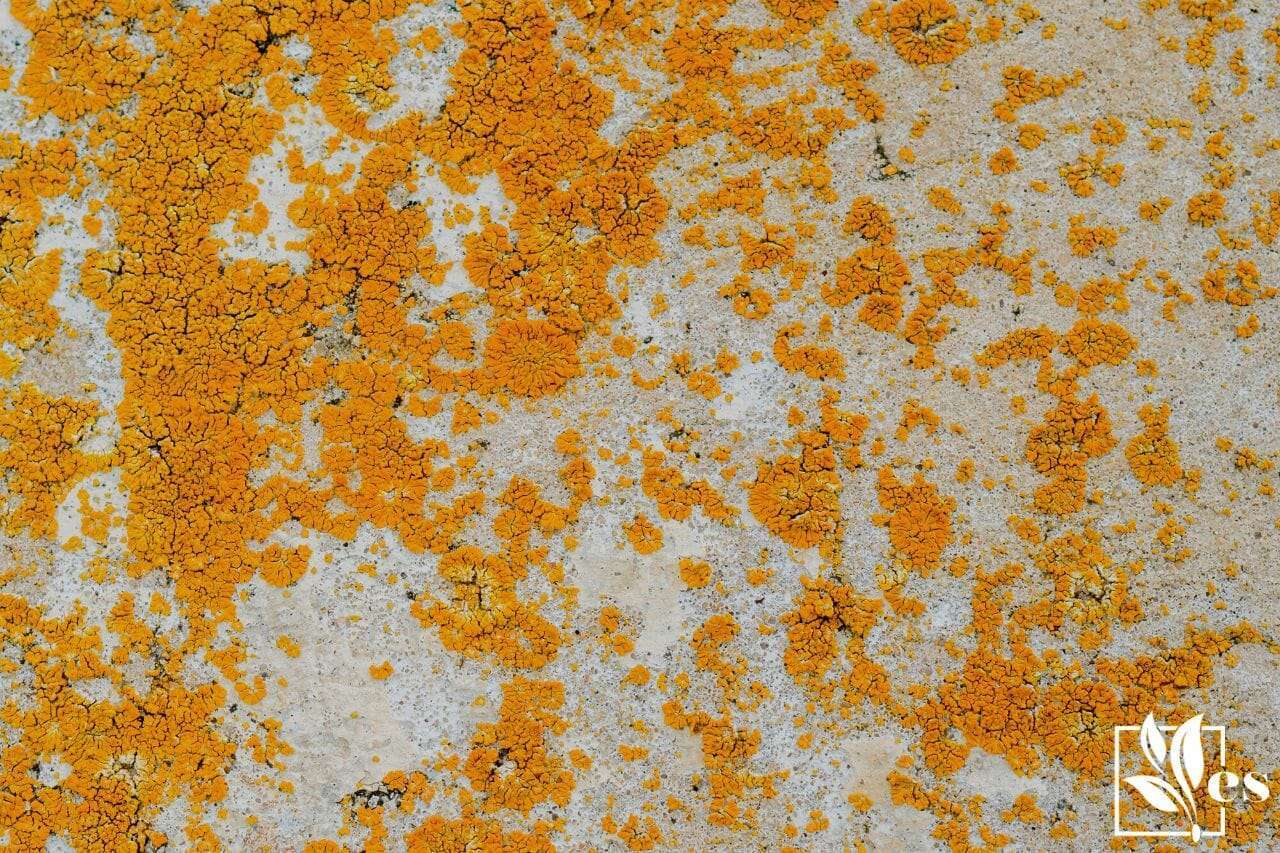Yellow mold in soil looks exceptionally terrible. However, you need not panic as it is not as harmful or destructive as other fungal infections.
 In this complete guide, you will learn why your soil might be popping up this fungus everywhere. You also get to learn how to treat it in several ways.
In this complete guide, you will learn why your soil might be popping up this fungus everywhere. You also get to learn how to treat it in several ways.
Why Is There Yellow Mold in Soil?
Yellow-colored mold or fungus forms in the soil when the spores of Fuligo septica are introduced into the type of soil you have. These spores then germinate when conditions become favorable. Favorable conditions entail soil that is moist, dark, and poorly aerated.
Below, we discuss all the causative factors in detail.
– Overwatering the Soil
Never underestimate the role moisture plays in mold growth within the soil. If your soil is infected with Fuligo spores, it will barely take 24 hours of constant moisture for these spores to germinate. Soon, your soil will be filled with yellow adult fungal bodies.
That is why it is imperative to stick to a prescheduled watering regime. Most house plants require their soil to dry one to two inches before watering.
The soil also needs proper water channels so extra water can drain out. Equally important is the need for a right-sized drainage hole, proper aeration, and sunlight to prevent soil overwatering.
– Already Infected Soil
If you are doing everything right by your plant but these yellow fungi still keep popping up, the most probable reason is that your soil was infected with Fuligo spores beforehand. When the conditions seem right, the spores germinated and grow fruiting bodies.
That is why you should always buy soil from a trusted seller. There are lots of sellers out there selling sub-par soil to inexperienced plant owners. It is even better if you can find someone who sells sterilized soil.
You can sterilize your soil before potting your plants. Several DIY methods are effective yet easy to carry on at home. Sterilizing soil eliminates all life forms from it, making it very safe for plant use.
– Using Contaminated Fertilizer
Are you one of those individuals who prefer organic fertilizer over chemical ones? There is no doubt that natural fertilizer, in the form of compost and mulch, is much healthier for your houseplant soil. However, because it cannot be sterilized, it comes with all sorts of risks.
Your composting pile might be contaminated with spores of several fungi such as slime mold, powdery mildew, and yellow or white mold. When such compost is added to the soil, it grows exponentially, feeding on moisture and nutrients.
– Contaminated Tools
You might have contaminated your soil using previously contaminated tools from another plant. This common mistake is made by those who don’t sterilize or clean their potting tools immediately.
– Not Enough Sunlight
Sunlight is essential for the plant’s growth and for keeping fungi and other organisms in check. UV light is known for preventing the excessive growth of fungi. Sunlight is also vital for evaporating the excess moisture from the soil after watering. Otherwise, the soil will remain waterlogged and provide fodder for fungal growth.
That is why the plants in your house’s darkest, humid corners are at the most risk. Plants kept under the shade of bigger trees are usually deprived of the adequate sun in outdoor spaces.
How To Get Rid of Yellow Mold in Soil
To remove the yellow-colored fungus in houseplant soil, you should remove the whole topsoil of your plant. You have an option of using both natural or chemical antifungals. Also, keep your new soil well-aerated and adequately watered.
Find out all the important details below.
– Remove the Topsoil
Most of the time, the yellow-colored mold growing in the soil is only present superficially. This fungus tends to spread mainly on the surface.
That is why most of the fungus will come off if you take a rake and scrape the top layer off. You must collect this soil in a bag and dispose of it organically.
– Remove Organic Debris
One of the biggest reasons behind soil turning yellow from this fungus is the presence of organic debris. As we discussed earlier, organic matter from compost and mulch is the primary site of development for this type of fungus.
That is why these things must be removed along with the topsoil and the fruiting bodies. All leaves, twigs, and grass clippings covering the soil must go.
Unfortunately, if you cover the surface of your soil with adornments like shells and stones, these also need to go. They might act as a reservoir for fungal spores and reinitiate an infection.
– Go for Natural Fungicides First
It is always fruitful to go for natural fungicidal agents before chemical ones. They are far safer for both you and your plant. Here are our three best natural ingredients to eliminate that yellow slime mold.
Neem Oil
Neem oil is a natural antifungal for plant soil. It is available quite easily these days, so always buy one from an authentic source. It is effective against most fungal species like Alternaria, Penicillium, and fusarium, to name a few.
Just one teaspoon in one gallon of water is enough. Bathe your soil with this soil slowly and steadily. You can also add one teaspoon of dishwashing soap for extra measure.
Baking Soda
Baking soda is present in almost all houses and must be used consistently to treat mold in potted plants. The most uncomplicated soda recipe starts with a mixture of one teaspoon in a gallon of water. Place this in a spray bottle and use it every three days for several weeks.
Another mixture that works is four teaspoons of baking soda in a gallon of water and an ounce of horticultural oil. Again, use it once or twice a week only. It might take some months for this to take effect.
Vinegar Mixture
Mix one to two teaspoons of ordinary household vinegar and use it to kill the yellow-colored fungus growing in your soil. You can also use apple cider vinegar instead of the plain old one. Like all-natural remedies, this also takes time, commitment, and consistency.
– Use Commercial Fertilizers
Removing mold from your potting mix has no quicker method than using a chemical fungicide. The best one out there in the market is the liquid-copper one, which is fairly easy to buy and convenient to use.
This fungicide will kill yellow fungus and other dangerous species such as Cladosporium and mucor. Only apply this on your soil once a week for at least two months. Take note to water the plant first before spraying fungicides.
You must isolate the plant before using chemical fungicides. It’s best to take care of this business outdoors in the open air. Most importantly, don’t forget to cover your whole body by wearing gloves, goggles, and fully sleeved clothes.
– Repot the Entire Soil
If even commercial fertilizers cannot seem to solve your problem, then maybe it’s time for a more radical treatment. You must lift the plant out of the infected soil first.
Bag the fungus-containing soil and have it disposed of accordingly. Take an entirely new pot and use a well-draining soil mix this time. Make sure to apply fungicide on the plant before repotting to prevent mold from growing back.
– Improve Watering
After ensuring that the bulk of the yellow or orange mold on the soil is gone, you must improve your watering habits. All fungi thrive under constantly moist and humid conditions. A soil that is overwatered will develop fungus again and again.
It would be best if you stuck to a strict watering schedule per the plant’s needs. Remember, it is always better to under rather than over water a soil. Make sure you allow the soil to dry somewhat each time before the next watering.
– Improve Drainage
The drainage of your soil needs to be improved, especially if you are repotting it. Make sure that the potting soil you use has some ingredient that loosens it. Be it perlite, sand, or coco coir, you must also have these in your soil.
Along with drainage, the air circulation of the soil matters a ton too. Fungus likes to grow in dark and humid places. A soil that allows air and light to seep through is going to make it difficult for it to grow in your soil.
Some plants prefer clay-like and compact soil. Even such soil needs good air circulation to prevent further mold from taking root.













